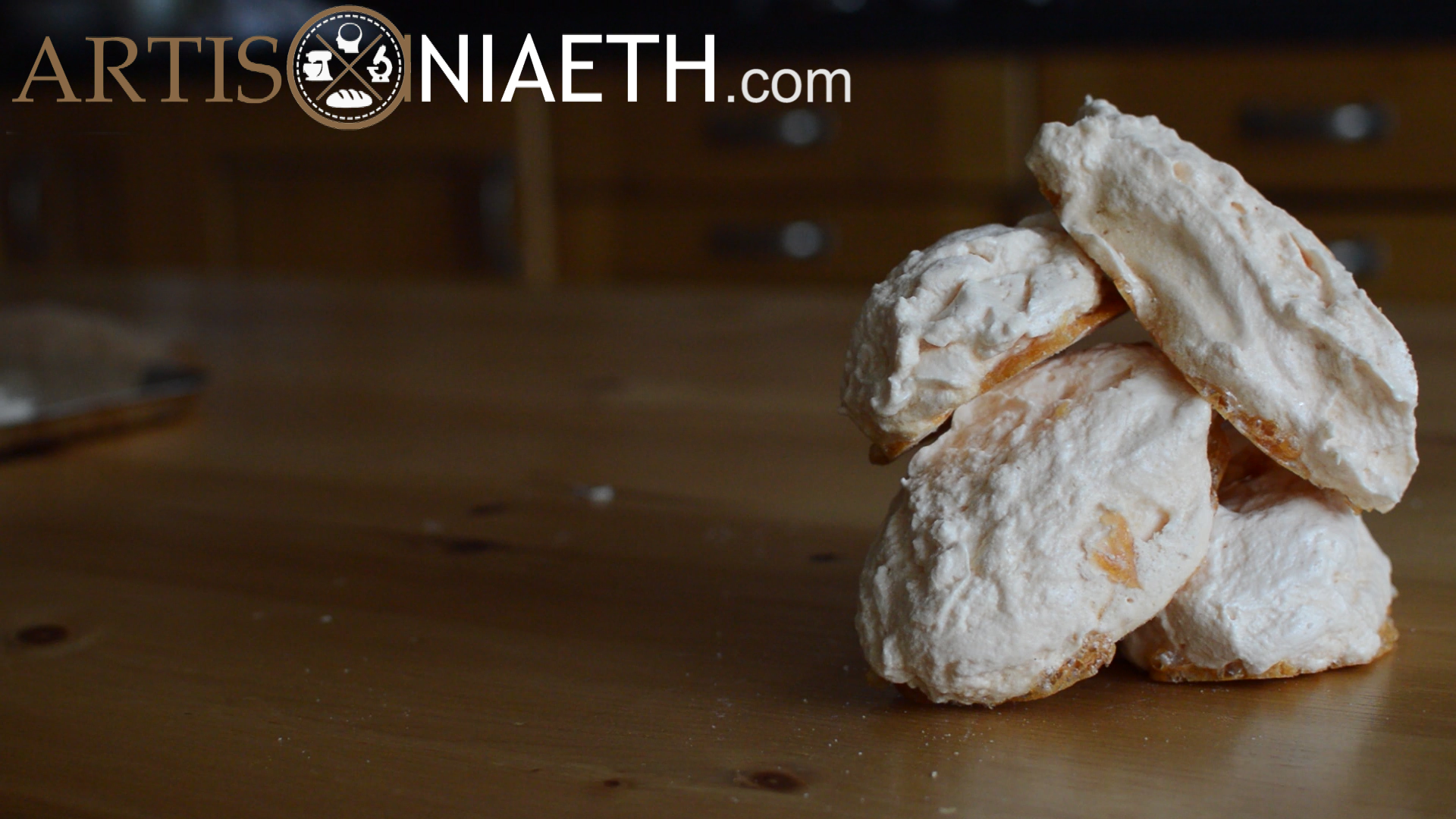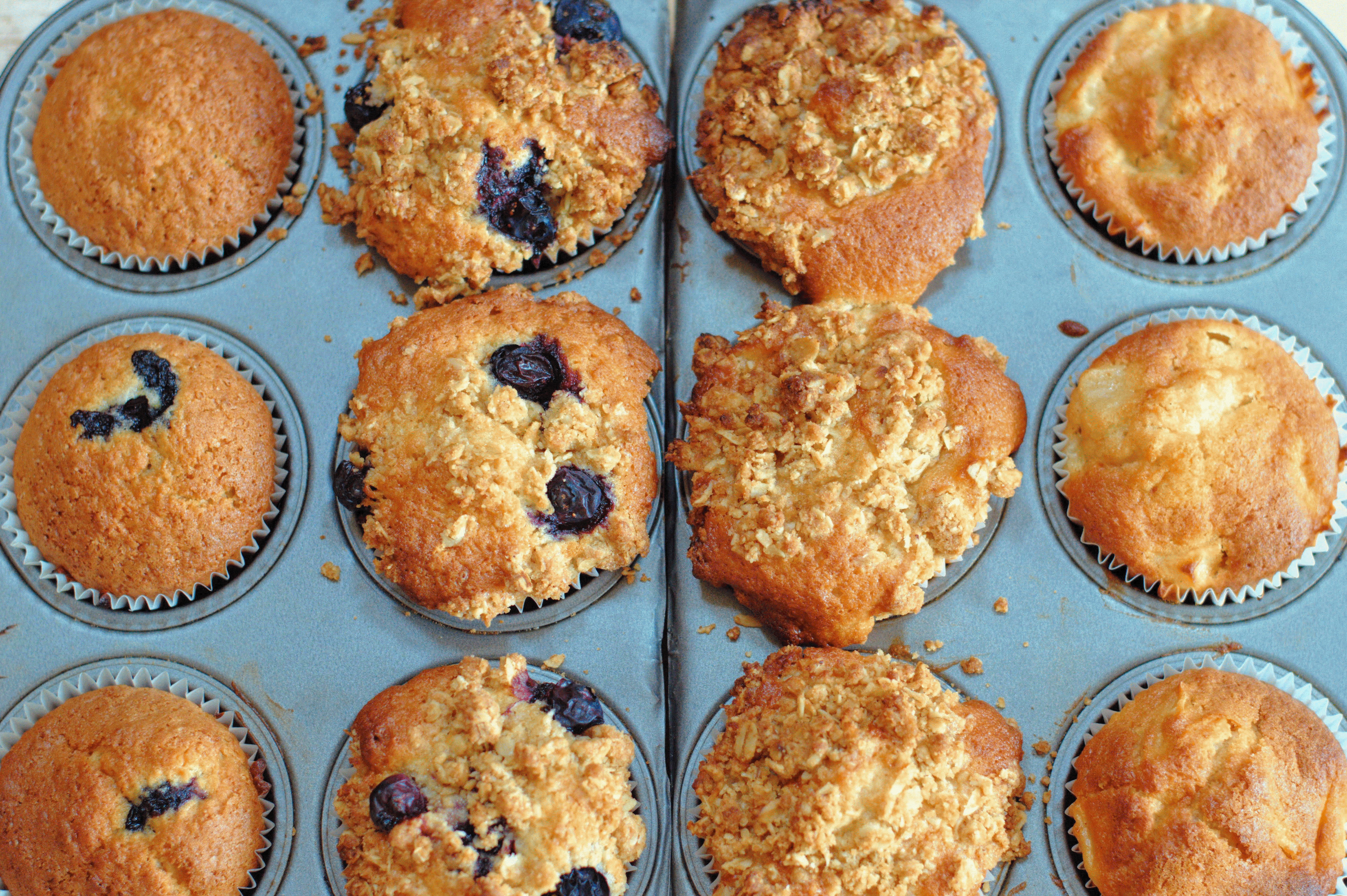If, like me, the very though of whipping egg whites to a delicate meringue sends shudders down your spine, then I’m sure I’m not alone in having full on nightmares over Italian Meringue.
Luckily, I’ve been doing my homework recently along with plenty of experimenting and I can now give reveal to you the secret of a (literally) bullet proof Italian Meringue.
At it’s core, a meringue is a simple solution of sugar and water (egg whites being 90% water), with the ratio between the two dictating the texture and density of the baked meringue.
In this recipe, I’ve gone for a 3:2 ratio, giving a meringue that’s dense and crunchy, without endangering your teeth and lower jaw.
Melting the Sugar
Measure and add the sugar to the saucepan. Gently add the water without stirring the mixture.
- 7oz / 200g sugar
- 3.5oz / 100g water
Heat the sugar over a medium heat until the sugar dissolves and the mix starts to bubble
Let the sugar heat up over a low heat. It will be ready when it reaches between 115 – 120°C ( 10 – 15 minutes )
Careful not to heat the sugar over too high a heat. If it boils too vigorously, the molten sugar can bubble up the sides of the pan. If the bubbling then dies down, the sugary residue on the sides will cool and form sugar crystals, which, if they fall back into the pan, will act as a nucleation site, causing the rest of the molten sugar to cystalise around it in a a chain reaction, ruining the mix. All because of one rogue sugar granule.
The same holds true for stirring the mixture. The temptation is to stir the undissolved sugar to speed things up, however doing this will just increase the likelihood that syrup sloshes up the side of the pan, forming granules and leading to potential disaster.
The easiest solution is to just let the sugar be. Use the thermometer probe to agitate undissolved pockets of sugar if you have to (it’s thin so it won’t disturb the liquid and cause too much sloshing).
So, if leaving the sugar alone is the answer, you should therefore turn around, grab a whisk and focus on whipping those egg whites!
Whipping the Egg Whites
Seperate your eggs, placing your whites in a clean bowl (you can keep your yolks to make fresh pasta).
The reasoning behind the ‘clean bowl’ thing is similar to a chef’s ‘no goldfish’ (no yolk in the whites) rule. Any fat (such as grease in the bowl or fatty egg yolk) will compete with the proteins in the whites for space at any air-liquid boundary formed during whipping. This will then decrease the overall volume and stability of the finished meringue foam.
- 4 large eggs
Add your cream of tartar / lemon juice.
This step is not essential but the addition of an acid will help with whipping the meringue
- 1/2 tsp cream of tartar / lemon juice
Whip the whites until firm peaks start to form. (3-5 minutes…with an electric whisk)
If you over whip and the whites begin to split and turn grainy, don’t worry, the addition of the sugar later will loosen it up again. In this case, it’s always better to over rather than under whisk.
Once done, you can let the whipped whites sit whilst you wait for the sugar to come up to temperature.
When the Sugar’s Ready
By now, the sugar syrup should be within the 115 – 120°C range, remove from the heat.
Whisk the hot sugar syrup into the whipped whites until the mixture forms a stiff, glossy meringue.
The easiest way of doing this is to pour sugar down the side of the bowl with one hand whilst quickly whisking it in with the other. Or, of course, if you do happen to be loaded, you could just use a KitchenAid to whisk for you…although with that kind of money I think I’d just buy Italian Meringues…
The meringue is now ready to be used for icing, piping, baking or whatever you need out of it.
Using the meringue
Shape the meringue (either with a hot spoon or much tidier piping bag) into whatever shape or form you like.
-
One baking tray, lined with baking paper.
- Piping bag / Spoon, with hot water to heat it.
Bake the shaped meringues at around 80°C ( 60°C with fan) until the exterior hardens ( 6 hours)
Leaving the meringues in the oven, let them dry out overnight with the oven off. ( 12 hours )
If possible, you can try and speed up the drying process after the meringues have baked by flipping them over on the baking sheet (careful not crush them peeling them off the paper). This will allow moisture to escape up through the permeable, soft meringue base, instead of being trapped underneath the meringue’s hard shell.
There you have it then, the mystery of the Italian Meringue solved and explained, all in one recipe.
For a more in depth analysis of the chemistry that ends up forming these Italian Meringues, check out of the Exploring Egg Whites page over at The Lab, so you can begin to understand what’s going on the next time you find yourself whipping one out, in the kitchen.



